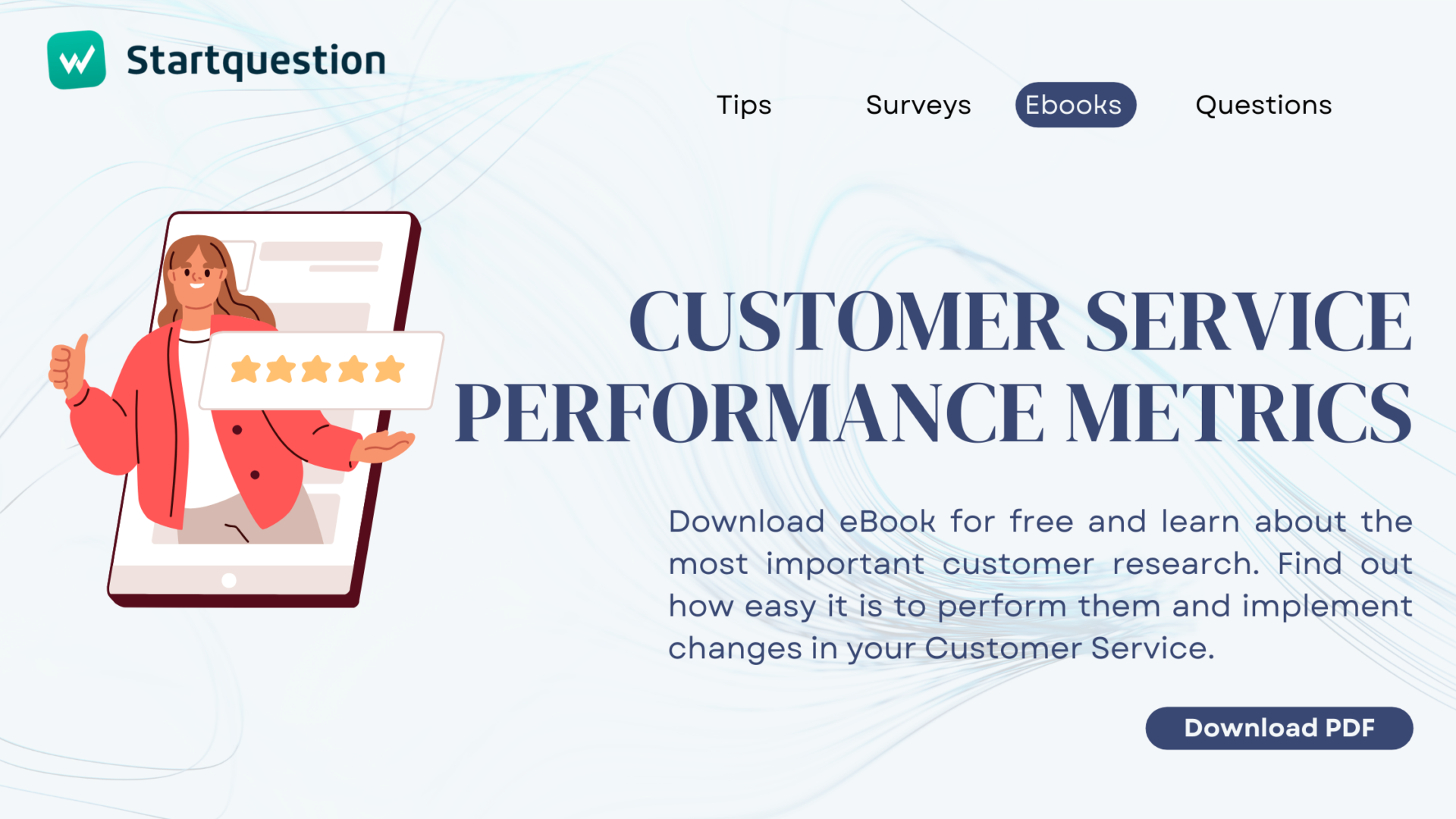Warren Buffet once said that it takes 20 years to build a reputation and 5 minutes to ruin it. Once you start thinking about your work that way, you’ll prioritize clients’ voices. To begin the process, you need to know what types of metrics measure customer satisfaction and how to get the most of them to help your business shine like a diamond.
Why Should We Measure Customer Satisfaction?
Do you recall that Benny Benassi Satisfaction clip? I bet you do.
No matter if you enjoy it or not, it has a great business message. Do your best to take care of your clients till they can get their satisfaction. Why? Because highly satisfied customers are the perfect fuel for every organization.
There’s no rocket science in customer satisfaction definition. It is all activities aimed at examining the level of customer satisfaction with products or services of a specific brand.
We already know what customer satisfaction is. Now let me introduce to you the most popular CX metrics. Gathering feedback from your clients is the best way to gain qualitative data that will help you adjust your performance to the market needs.
Try one of the best customer feedback survey tools for free!
Start trial period without any credit card or subscription and easily gather customer feedback via link, social media, email, and more.
No credit card required · Cancel any time · GDRP Compilant
The 5 Important Customer Satisfaction Metrics
The customer lifecycle is the time from the first to the last touchpoint of each client with your organization. Try to measure their overall satisfaction from the beginning of the customer journey (onboarding process for new customers) to the end, asking for the reasons for leaving (churn rate surveys and analysis).
The Customer Satisfaction Score (CSAT) is a powerful metric for examining customer satisfaction levels. The Customer Effort Score (CES) emphasizes customer experience and specific effort needed, e.g., to finalize a transaction. The Net Promoter Score (NPS) points out whether we have loyal customers. The Customer Churn Rate (CCR) indicates if we have problems with client retention. The last metrics are different types of surveys gathering Customer Feedback.
Ready to try them all? Great!
Customer Satisfaction Score (CSAT)
The first tool will work when you feel that more and more customers are giving up your products and are doing market research looking for competitive solutions.
CSAT is a metric that allows you to measure whether and to what extent your product or service meets/exceeds customer expectations. This way, we can measure the satisfaction of the recipient of our offer concerning a specific product, service, transaction, or contact with the customer support team or the seller.
Respondents provide answers on a multi-level scale (from very dissatisfied to very satisfied). The more satisfied clients you have, the highest customer satisfaction scores you’ll get. See the CSAT survey example.
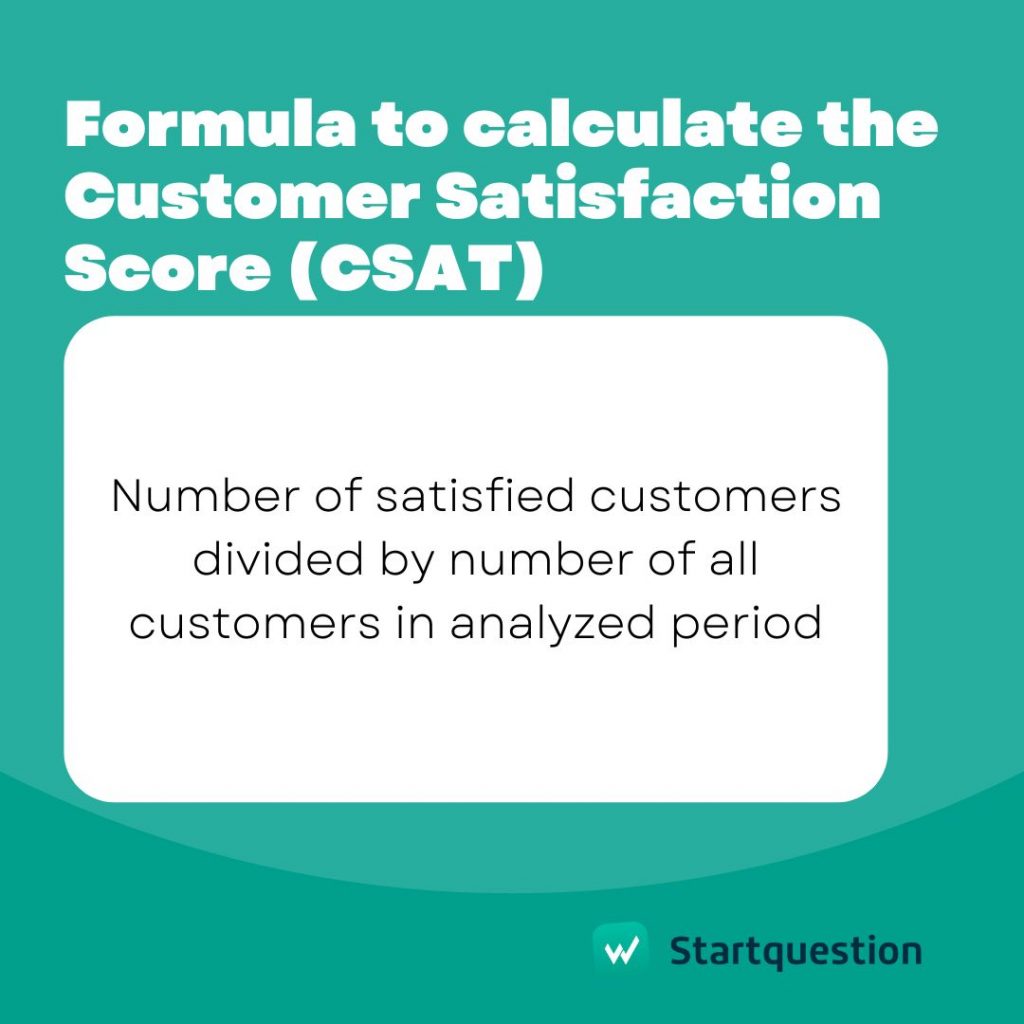
Formula to measure the Customer Satisfaction Score (CSAT).
Customer Effort Score (CES)
One of the key performance indicators of a successful customer-brand relationship is the effort needed to finalize transactions or understand the instructions provided by the customer service rep.
If you want to check if customers are not losing too much time (customer effort) on handling the order or other issues that they want to deal with with the brand, ask them about it. Unhappy clients wouldn’t tell you that. Make the first move to listen to their voices and thus strengthen customer retention.
CES is a simple questionnaire. Customers respond on a scale from 1 (very small) to, e.g., 5 (very large), indicating the effort they had to put into a specific task. A low effort will definitely increase customer loyalty. See the Customer Effort Score survey example.

The Customer Effort Score (CES) sample question.
Net Promoter Score (NPS)
Net Promoter Score comes down to checking how likely a customer would recommend your product or service to family and friends. In other words, we measure customer loyalty that way.
Respondents answer the NPS question on an eleven-point scale (0-10). Depending on their score, they go to the group of detractors (0-6), neutrals (7-8), or promoters (9-10). NPS score is a difference between the percentage of promoters and critics. The higher it is, the better customers feel about the brand.
It’s quick research with significant survey response rates. Net Promoter Score allows not only to compare itself against the background of the industry but also to set directions for the development of the organization. See the NPS survey example.
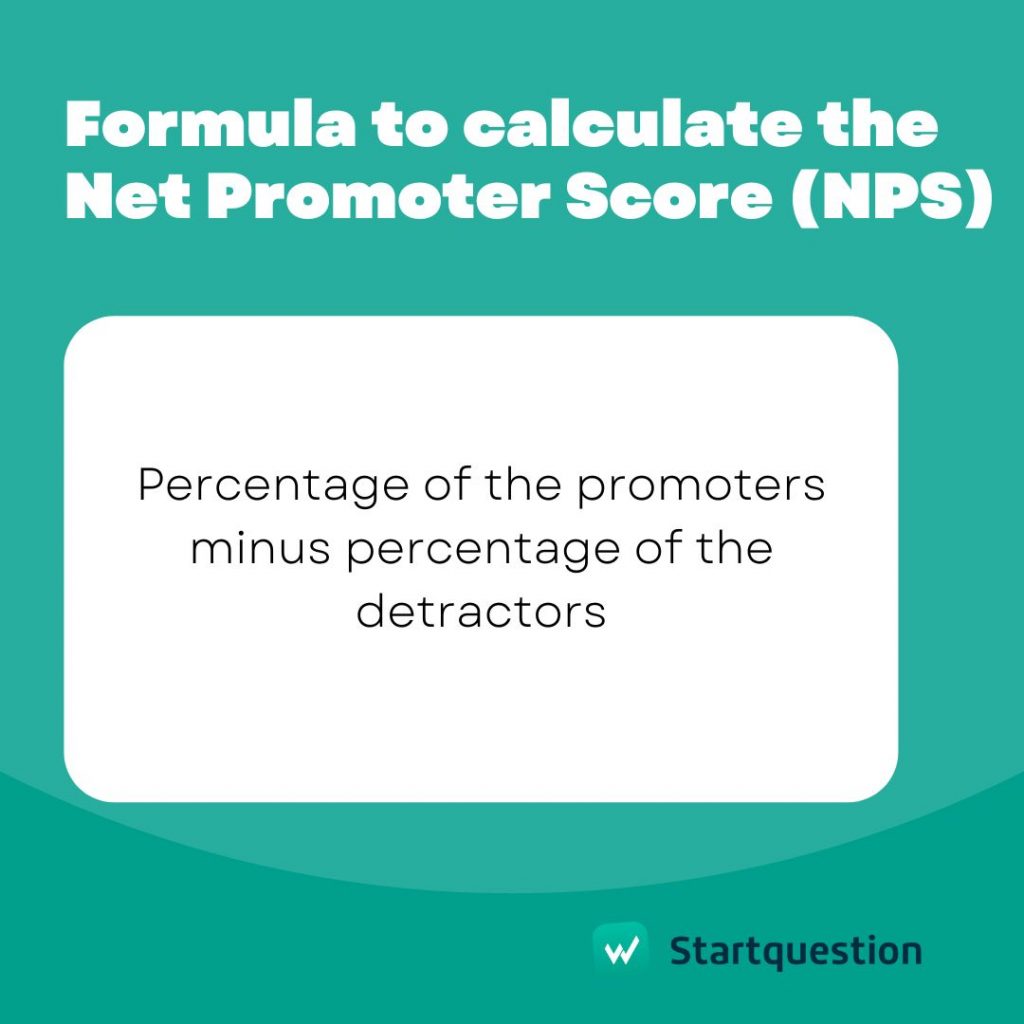
Formula to measure the Net Promoter Score (NPS).
Customer Churn Rate (CCR)
Measuring the satisfaction of current and new customers is just a part of collecting valuable insights from your clients. Equally meaningful for the entire business is the answer to the following question: Why do clients leave you?
Don’t panic. Churn is the natural end of each customer’s lifetime. The problem occurs when the number of clients you lose during a specific period of time is higher than it should be. We’ve recently posted a brand new blog article about churn rate with formulas to measure different types of churn, examples, and tips on how to proceed with churn analysis.
Listen to unsatisfied customers, no matter if they stay with you or not. Those are priceless insights that may help you adjust your offer, prices, or customer service metrics in the future. See the customer exit survey example.
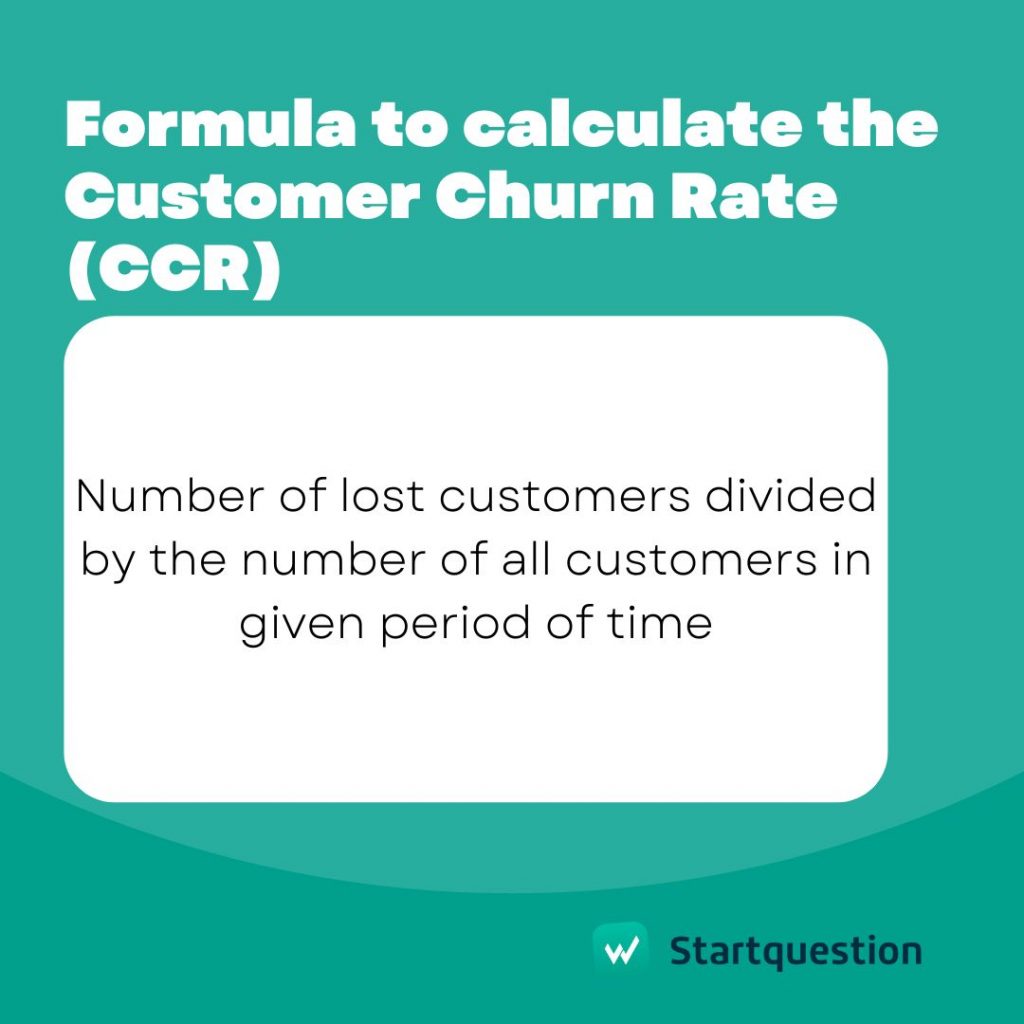
Formula to measure the customer churn rate.
Customer Feedback Surveys
There are other metrics to measure customer satisfaction. With a professionally crafted online survey, you may track customer feedback regarding brand awareness, customer service interactions, overall satisfaction, market research, overall customer sentiment, product/service development, customer education, client needs, and much more.
Each client’s insights matter. Stay open both for happy customer feedback, and the voices of the dissatisfied customers. Measuring satisfaction is about meaningful survey data that will give you the information necessary to grow and improve your performance. It’s impossible to gather valuable customer satisfaction data without listening to critics.
We’ve prepared customer satisfaction survey templates to measure client satisfaction and experience at each part of the customer journey. Feel free to use our survey examples for your research purposes.
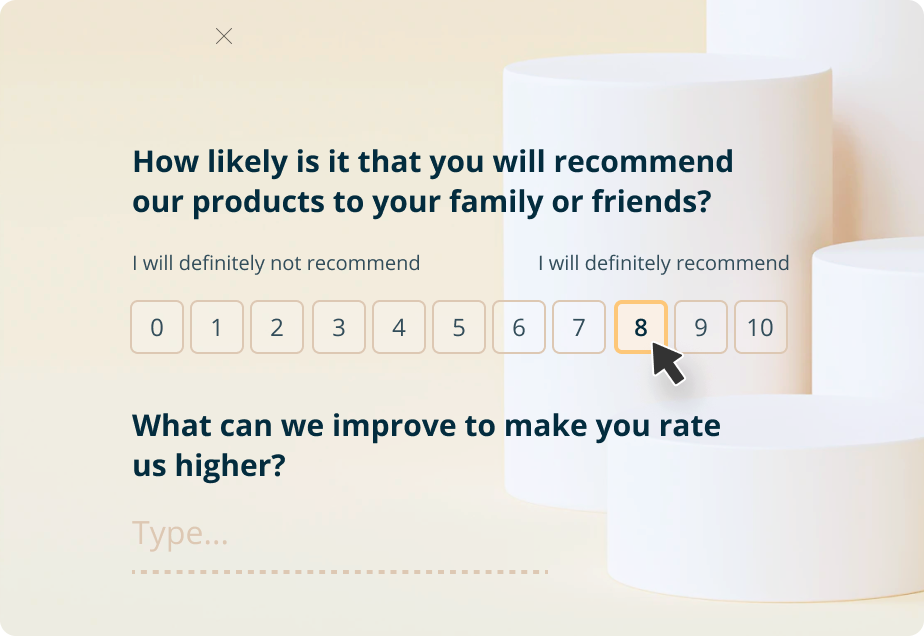
Collect customer insights for further analysis.
Advantages of Using Customer Satisfaction Metrics
Let me quote one more business guru. Bill Gates stated that your most unhappy customers are your greatest source of learning. I think it’s a good sentence to start the list of benefits of using customer experience metrics in your organization.
Advantages of measuring customer satisfaction:
- Ability to control and increase customer loyalty
- Building brand awareness and a positive company image
- Providing reasons for customer churn and helping to keep them
- Strengthening client satisfaction and customer experience
- Improving customer sentiment towards the brand
- Highlighting the importance of customer success
- A chance to improve the customer service department
This is just a list of examples of what customer satisfaction measurement tools may bring to the table for your organization. Properly constructed customer satisfaction surveys go in pair with customer success. Just be patient and invest your time in research and analytics.
Additional Customer Satisfaction Scoring Systems
There are also other ways to measure client satisfaction. When customers feel that a company treats them right, they enjoy its products and services, they are keen to share their positive views on social media or comments section of the online store.
From a marketing perspective, it’s an opportunity to show how satisfied customers rate your business. Try five-star ratings (clients choose from one to five stars to evaluate your product or service), smileys (they choose specific face emojis from sad to happy), or thumbs up/thumbs down (customers indicate whether they are satisfied or not).
It’s a simple brand-customer interaction. It looks great, helps potential clients in market research, and (when scores are high) tells a lot about your performance.
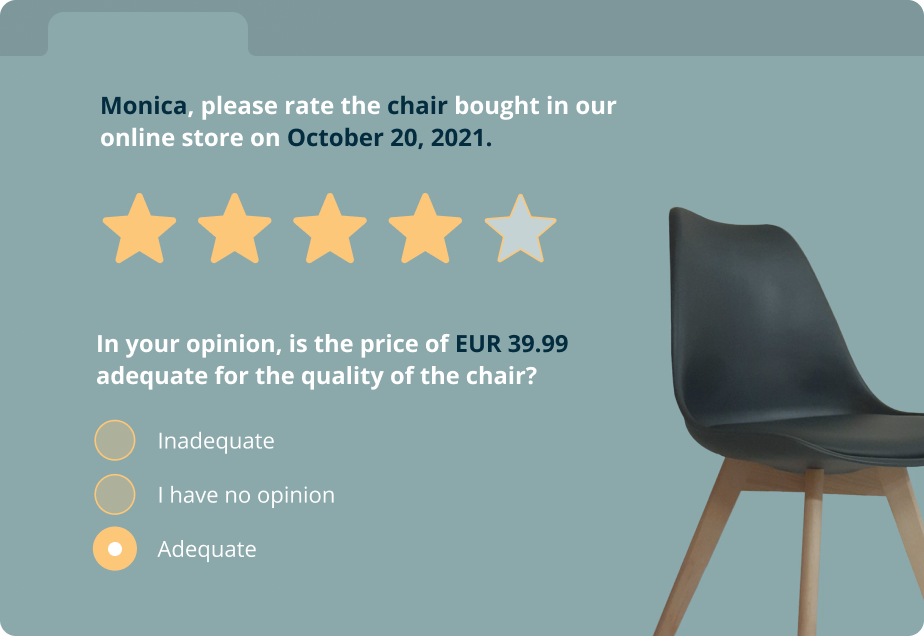
An example of a five-star ranking.
Measuring Customer Satisfaction: Key Takeaways
Customer satisfaction tracking is essential to the development of any business. It gives insight into clients’ opinions, allows you to minimize churn, and develop your business in line with market trends and the changing expectations of buyers.
Checklist: How to Measure Client Satisfaction
- Define customer satisfaction KPIs (customer service individual performance upgrade, improve customer loyalty, company’s NPS, or customer effort score).
- Select the research methodology and the way to measure customer satisfaction levels (collect data with customer surveys, individual talks, chatbots, mailing, messages on the intercom, etc).
- Collect and analyze customer satisfaction data.
- Pay attention to client satisfaction metrics during the whole customer journey.
- Use positive customer opinions (five-star rankings, etc.) to build a positive image of the brand among current and prospective clients.
Ready to Start Collecting CX Data?




